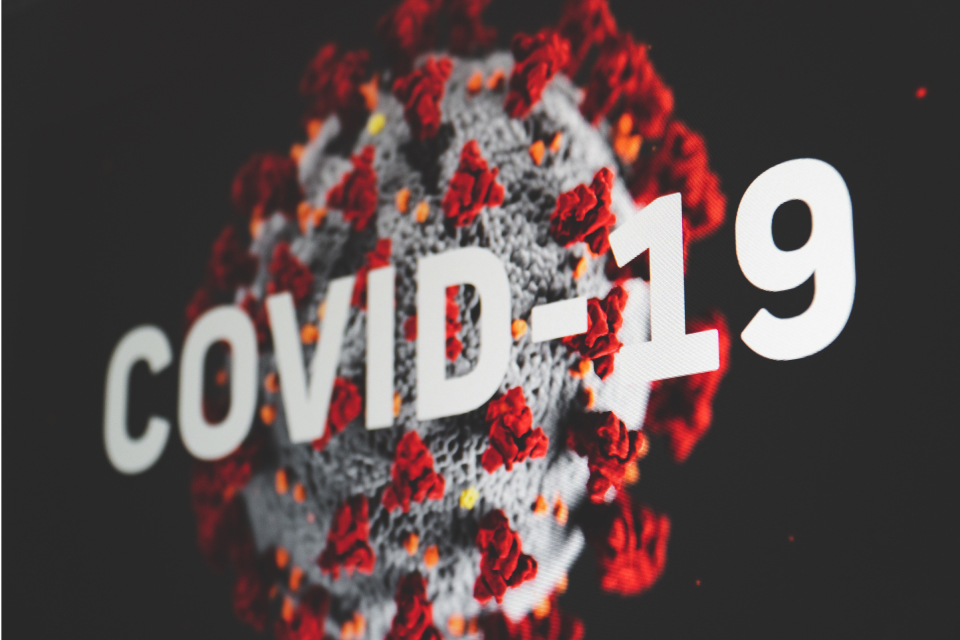This post describes the clinical investigation process under the Medical Devices Rules, 2017.
Introduction:
The Indian healthcare industry has risen to the challenge of providing affordable drugs domestically and internationally. India has earned the reputation of being the pharmacy of the developing world[1]. However, to extend this reputation for medical devices, Indian regulators will need to promote manufacturing and ensure that these ‘made-in-India” devices are safe and trustworthy. To this end, this article evaluates steps involved in the clinical investigation process under the Medical Device Rules, 2017 (‘MD Rules’).
De-coding some basic concepts:
To receive regulatory approval in India all investigational medical devices[2] (“New Medical Devices”) are required to undertake a “clinical investigation”. Clinical Investigation is a systematic study to assess the safety, performance, and effectiveness of a medical device.[3] Only those New Medical Devices, which pose a very low risk to humans and are classified as Class A medical devices under MD Rules are exempt from this requirement5.
De-coding the approval process for New Medical Devices under MD Rules:
An overview of the clinical investigation process is provided hereunder:
| Step 1- Application for undertaking Clinical Investigation | The Sponsor (i.e., the entity that initiates and is responsible for the Clinical Investigation) will apply to the Central Licensing Authority to seek approval to undertake a Clinical Investigation.[4] The following data is required to be submitted with the application[5]– 1. Design Analysis Table– This table includes information about the physical and metrological standards used in the New Medical Device; the basic design of the New Medical Device; the tests adapted for design analysis and the rationale for selecting these tests.[6] 2. Biocompatibility and animal performance study – such studies demonstrate the interaction between the device and body.[7] 3. Investigator’s brochure – It documents the name of the device, its manufacturers’ information, results from pre-clinical testing, risk management, and supporting literature for the device.[8] 4. Clinical Investigation Plan – It documents the particulars of how the clinical investigation will be conducted, who the Sponsor and principal investigators are, and what the intended use of the device is.[9] 5.Case Report Form – These forms are used for recording observations and data emerging from the investigation.[10] 6.Informed consent form – This is the form through which informed consent of participants is recorded.[11] 7. Investigator’s undertaking – An undertaking by the investigator indicating acceptance of legal requirements and the clinical investigation plan.[12] 8. Ethics Committee Approval – Please see the row below for details. Sponsors can opt to take this before the filing of the application to undertake a clinical investigation. In which case the approval must be submitted with the application. Or they may opt to take this after their application has been approved. In either case, they must take the approval of the Ethics Committee before a clinical investigation is commenced.[13] 9. Regulatory status in other countries, where the New Medical Device is being used in other countries.[14] 10.Proposed instructions or directions for use and labels to be used on the New Medical Device. [15] An application to conduct a Clinical Investigation must be either accepted or rejected by the Central Licensing Authority within 90 days of its submission.[16] |
| Step 2 – Approval | The Clinical Investigation must be approved by the Central Licensing Authority and by the Ethics Committee. The Ethics Committee is an independent committee that reviews the plan of a proposed Clinical Investigation and oversees the conduct of a Clinical Investigation to safeguard the rights, well-being, and safety of the participants in a Clinical Investigation.[17] Both the Central Licensing Authority and Ethics Committee can withdraw their consent at any time during a Clinical Investigation if the Clinical Investigation is not being undertaken as per the approved plan or to safeguard the interests of the subjects of the Clinical Investigation. |
| Step 3- Pilot Study[18] | This is the first study undertaken in a Clinical Investigation.[19] It is an exploratory study. It is conducted on a few participants who are suffering from a disease or condition which the New Medical Device intends to treat. It lays the groundwork for the larger Pivotal Study. Based on the observations in the Pilot Study investigators will determine- who should be eligible to participate in the Pivotal Study; how will the outcome of the Pivotal Study be measured and plan the logistical requirements of the Pivotal Study. If a New Medical Device has been tested in another country, the Pilot Study may be bypassed. The Central Licensing Authority may choose to rely on the data generated in such a foreign study and waive off the requirement of undertaking a pilot study in India.[20] |
| Step 4 – Pivotal Study[21] | This is the definitive study based on which the safety and effectiveness of a New Medical Device are validated.[22] It is conducted on a larger set of participants. Even devices that have been granted regulatory approval abroad, will be required to undergo a Pivotal Study in India before they can be introduced in India. Only New Medical Devices that substantially replicate a technology that has already been approved in India can be granted an exemption from undertaking a Pivotal study by the Central Licensing Authority.[23] |
| Step 5- Approval for manufacture and import | Once the Clinical Investigation on a New Medical Device has been completed the manufacturers and/or importers may apply to the Central Licensing Authority for permission to manufacture or import the concerned New Medical Device. |
| Step 6 – Post Marketing Clinical Investigation | To optimize the intended use of a New Medical Device, the Central Licensing Authority may require the Sponsor to undertake a performance study of a New Medical Device after marketing approval has been granted.[24] |
| Step 7- Post-marketing Surveillance | After a New Medical Device has been approved, Sponsors are required to submit a Periodic Safety Update Report to the Central Licensing Authority.[25] |
| Other Compliance Requirement | A Clinical Investigation plays the same role in the approval of New Medical Devices, that a clinical trial does in the approval process for new drugs. Hence, a Clinical Investigation also needs to comply with several regulatory measures that apply to a clinical trial. These include: – Registration with the Clinical Trial Registry in India[26]– this is a public database where all clinical trials being conducted in India are documented. – Adherence to the Good Clinical Practices Guidelines[27]as they lay down the ethical and scientific quality standard for designing, conducting, and recording trials that involve the participation of human subjects[28]. |
Conclusion:
This overview of the Clinical Investigation process under Medical Device Rules shows that the regulator has merely laid a prescriptive list of steps involved in the assessment of New Medical Devices. However, the regulator has failed to provide a clear indication of how these steps are used in assessing the safety and efficacy of new medical devices. As such apprehensions on the safety of the medical devices themselves are not abated.
In an earlier post, we presented the piece-meal approach of Indian regulators to medical device regulation and highlighted the need for industry engagement to co-create robust and internationally accepted medical device regulations. Regulation on clinical investigation of medical devices is one such area for engagement. The need for engagement is pressing. If India aims to be the pharmacy of the world and become a hub in the global supply chain in healthcare, products emanating from India must be trusted. To achieve this, two things are important. Firstly, it is important to have a clinical evaluation process that assesses all aspects of a medical device. The process must account for modern innovations that harness the power of technology (e.g., AI/ML-based solutions and standalone software that operate as medical devices). Secondly. this process must use internationally accepted standards to assess and prove the safety and efficacy of a medical device. Currently, this process does not sufficiently address the two issues.
This article has been authored by Shambhavi Ravishankar with inputs from Tanya Sadana.
For more on the topic, please get in touch at contact@ikigailaw.com
Image credits: Pixabay
[1] (Available at: https://www.msfindia.in/tell-us-stop-bullying-india-pharmacy-developing-world/)
[2] Rule 3(x), Medical Devices Rules 2017: Investigational Medical Devices are devices which do not have a similar device in the market or a device which is being used for a new population or has a new intended use.
[3] Rule 3(k) Medical Devices Rules, 2017
[4] Rule 51, Medical Device Rules, 2017
[5] Rules 51, 59, 60 and Seventh Schedule, Medical Device Rules, 2017 – Requirements for permission to import or manufacture investigational medical device for conducting clinical investigation
[6] Table 1, Seventh Schedule, Medical Device Rules, 2017
[7] Table 2, Seventh Schedule, Medical Device Rules, 2017
[8] Table 4, Seventh Schedule, Medical Device Rules, 2017
[9] Table 5, Seventh Schedule, Medical Device Rules, 2017
[10] Table 6, Seventh Schedule, Medical Device Rules, 2017
[11] Table 8, Seventh Schedule, Medical Device Rules, 2017
[12] Table 9, Seventh Schedule, Medical Device Rules, 2017
[13] Schedule Y Para 2(5), Drugs and Cosmetics Rules, 1945; Specific reference has been made to the various documents and steps needed to ensure ethical clinical trials decided at the “WMA DECLARATION OF HELSINKI – ETHICAL PRINCIPLES FOR MEDICAL RESEARCH INVOLVING HUMAN SUBJECTS”, 1964 (Available at: https://www.wma.net/policies-post/wma-declaration-of-helsinki-ethical-principles-for-medical-research-involving-human-subjects/)
[14] Table 3, Seventh Schedule, Medical Device Rules, 2017
[15] Table 3, Seventh Schedule, Medical Device Rules, 2017
[16] Rule 52, Medical Device Rules, 2017
[17] Schedule Y Para 2(5), Drugs and Cosmetics Rules, 1945; Specific reference has been made to the various documents and steps needed to ensure ethical clinical trials decided at the “WMA DECLARATION OF HELSINKI – ETHICAL PRINCIPLES FOR MEDICAL RESEARCH INVOLVING HUMAN SUBJECTS”, 1964 (Available at: https://www.wma.net/policies-post/wma-declaration-of-helsinki-ethical-principles-for-medical-research-involving-human-subjects/
[18] Para 2(6), Seventh Schedule, Medical Device Rules, 2017
[19] Explanation to Rule 51(2)(a) and Para (6), Seventh Schedule, Medical Device Rules, 2017
[20] Para 1(3), Seventh Schedule, Medical Device Rules, 2017
[21] Para 2(7), Seventh Schedule, Medical Device Rules, 2017
[22] Rule 51(2)(b) and Para (7), Seventh Schedule, Medical Devices Rules, 2017
[23] Rule 51(5), Medical Device Rules, 2017
[24] Para 2(8), Seventh Schedule, Medical Device Rules, 2017
[25] Para 3, Seventh Schedule, Medical Device Rules, 2017
[26] Rule 53(iii) of the Medical Device Rules, 2017
[27] Good Clinical Practices for Clinical Research in India http://www.sgpgi.ac.in/sop/GCP-%20Indian.pdf (released in 2013 in accordance to the standards listed in ISO 14155:2011)
[28] Foreword of Good Clinical Practices for Clinical Research in India available at http://www.sgpgi.ac.in/sop/GCP-%20Indian.pdf (released in 2013 in accordance to the standards listed in ISO 14155:2011)










